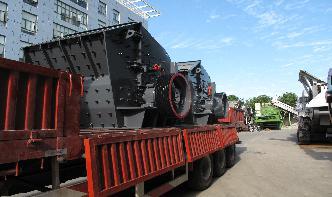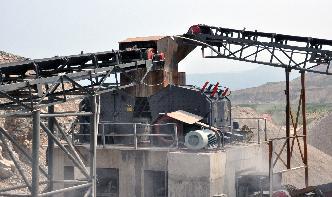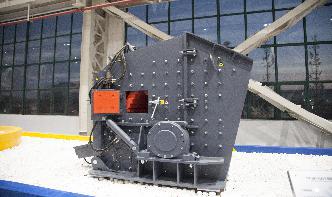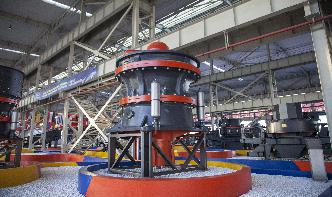
Maria,2007.]. Pozzolanic materials are important ingredients for making SCC [Mihashi H, Yan X,1995.]. For many years, pozzol anic admixtures, such as blast furnace slag (BFS), pulverized coal ash (fly ash), silica fumes, and copper slag have been recycled to partially replace Portland cement in .

In this study, a fayalitic copper slag was characterised. Copper is present as sulfidic droplets. The content and particle size distribution of the major sulfide phases (bornite, chalcopyrite and chalcocite/digenite) were quantified using analytical scanning electron microscopy (QEMSCAN).

Using copper slag in polymer composites would possibly provide potential environmental as well as economic benefits for industries, particularly in locations where a considerable amount of copper slag is produced. The natural fiber reinforced polymer composites are more environmentally friendly, and are frequently used in

Investigated the effect of using copper slag as a replacement of sand on the properties of high performance concrete (HPC). Concrete mixtures were prepared with different proportions of copper slag ranging from 0% (for the control mix) to . Addition of up to 50% of copper slag as sand replacement yielded

Utilization of copper slag and discarded rubber tyres in construction Gupta., Blessen Skariah Thomas, Prachi Gupta International Journal of Civil and Structural Engineering Volume 3 Issue 2 2012 272 One application that could use old rubber tires is rubberized concrete. Concrete can be made

Jan 27, 2017· Copper slag, the waste material produced in the extraction process of copper metal in refinery plants, has a number of physical characteristics similar to that of natural sand; it can thus be a potentially good candidate for use as a fine aggregate in concrete production with many environmental benefits, such as waste recycling and the avoidance of landfilling, as well as a reduction in the need .

This amount of copper slag will be obtained from tons/ year from the Flash process technology with copper content of 1,4 % and tons/year from PS converter with copper content of 6 % (Sokolovic et al., 2015). Material bilans of flash furnace and converter slags is given in Table 2.

The use of ground copper slag up to 15% by mass as a Portland cement replacement increased the strength significantly [5]. The addition of copper slag to cement increasedits initial and final setting times [6]. The concrete batches with copper slag addition presented greater mechanical and .

It is different to the norm and its uniqueness lies in developing a data matrix sourced from 400 publications, contributed by 712 authors from 337 institutions in 40 countries from 1964 to 2015, on the subject of copper slag as a construction material, and systematically, analysisng, evaluating and modelling this information for use in cement, concrete, geotechnics and road pavement applications.

The use of copper slag in cement and concrete provides potential environmental as well as economic benefits for all related industries, particularly in areas where a considerable amount of copper slag is produced. The addition of copper slag as fine aggregate in .

copper slag was respectively as shown in Table The water absorption of 20 mm coarse aggregates, sand copper slag was found to be, and respectively. It was found that water absorption of copper slag was very low as compared with the natural sand and workability of concrete is affected due to it.

The effects of using copper slag wastes on hydration, gelling properties, mechanical properties, pozzolanic activity and durability aspects of concrete are studied. It has been found that copper slag have micro pozzolanic effect in the study. The concrete batches with copper slag addition presented greater mechanical and durability performance.

aggregates with copper slag. 2. EXPERIMENTAL PROGRAMME The Experimental Program was designed to investigate the effect on the mechanical properties of the concrete by using copper slag as a partial replacement for fine aggregate with different proportions viz., .

proportions of pulverised copper slag ranging from 0%, %, 5%, 10% and 15% replacing Portland cement. Activation of pozzolanic reactions of the pulverized copper slag using % hydrated lime by weight of Ordinary Portland cement. The slump of the fresh .

guidelines for the use of copper slag as sand for mortars and concrete. Khalifa, [2009] report that the use of copper slag as sand substitution improves strength and durability characteristics of high strength concrete at same workability and produces concrete that meets strength and .

Aug 01, 2009· Copper slag as sand replacement for high performance concrete Eight concrete mixtures were prepared with different proportions of copper slag ranging from 0% (for the control mix) to . Concrete mixes were evaluated for workability, density, compressive strength, tensile strength, flexural strength and durability.

Copper slag is such an industrial waste obtained during matte smelting and refining of copper. The common management options for copper slag are recycling, recovering of metal, production of value added products such as abrasive tools, roofing granules, cutting tools, tiles, glass, roadbase construction, railroad ballast, and asphalt pavements.

Also in the bituminous macadam, CS can be used as a base course layer below the wearing course [23]. Effect of CS on Plasticity Index. Copper slag, when mixed with locally available soil in a proportion of 30% CS and 70% soil, the plasticity index of the soil was reduced by 40% [24].

Leaching studies of copper from copper slag admixed concrete: 10x10x10cm 3 concrete cubes with water to cement ratio of were cast using copper slag. After 24 hours, the mortar specimens were demoulded and kept immersed in various aqueous media such as tapwater, rainwater and sea water.

paper describes an experimental study performed to determine possibilities for the use of copper slag as a substitute for the sand in the manufacture of concrete. Also, copper slag exhibits pozzolanic properties since it contains a low CaO content and other oxide such as Al2O3, SiO2, and Fe2O3.

Copper slag is a by‐product generated during smelting to extract copper metal from the ore. The copper slag obtained may exhibit pozzolanic activity and may therefore be used in the manufacture of addition‐containing cements. In this paper the effect of the incorporation of the copper slag .
